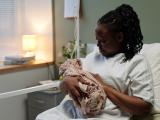Sep 28, 2012 (CIDRAP News) – Researchers from the Erasmus University lab that first identified the novel coronavirus implicated in two severe infections have published its full genome sequence, which they and other European scientists used to develop two assays to help confirm any future infections.
The gene sequence is from virus samples that a Saudi Arabian doctor who treated the first patient sent to the Erasmus group in the Netherlands in July. The patient was a 60-year-old Saudi Arabian man who died after battling pneumonia and severe renal disease complications of his infection.
The Erasmus team has uploaded the sequence to GenBank and has termed the new virus hCoV-EMC, according to their report yesterday in Eurosurveillance.
Researchers from Erasmus and other European centers also described in the report the two real-time reverse-transcription polymerase chain reaction (RT-PCR) assays. One is a screening test that targets regions upstream from the E gene (upE), and the other is a confirmation test that targets the open reading frame 1b gene (ORF1b).
They found that the tests didn't cross-react with other coronaviruses or with 92 clinical specimens of other common respiratory viruses, including four common cold coronaviruses. Preliminary testing on samples from the second patient, a Qatari man infected with hCoV-EMC who is hospitalized in Britain, showed clear signals for both assays, with the upE assay the more sensitive of the two.
Availability of diagnostic tests early in an epidemic is useful for the public health response, the group wrote. However, they noted that false-positive tests could hamper the development of risk assessments.
They offered to provide in vitro transcribed RNA controls to health professionals, providing only one for the upE assay to minimize the chance of accidental lab contamination. They recommended that lab officials confirm positive upE results and controls with the ORF1b assay.
In a separate Eurosurveillance report, officials from the European Centre for Disease Prevention and Control (ECDC) and the United Kingdom's Health Protection Agency reported some new details about the two patients and infection control measures that are under way.
They reported that the patient who died in Saudi Arabia had a 7-day history of respiratory symptoms when he was hospitalized for pneumonia in Jeddah, where he died on Jun 24 after experiencing acute renal failure.
Currently, the second patient, the 49-year-old man from Qatar, is on life support with pulmonary and renal failure. His contacts, which include healthcare workers, are being closely monitored for hCoV-EMC infection. Though some have reported mild respiratory symptoms, none has tested positive for the disease or shown any severe symptoms.
Reviewing the case definition that has been developed for the disease, health officials noted that human coronaviruses typically have a short incubation period of 3 to 4 days, noting that the longest incubation seen in the SARS outbreak was 12 days, which they said was an outlier. Currently, the interim case definition includes a 10-day incubation period for the novel virus.
They wrote that they expected the case definition to evolve as more epidemiologic and diagnostic information becomes available.
Serologic testing will determine if the two cases represent a severe form of the disease or if they represent isolated events. For now, the long interval between the two cases and the apparent lack of related cases suggest that hCoV-EMC poorly transmits among humans.
Also, the World Health Organization (WHO) in an update today said it has so far received no other reports of confirmed cases, and it echoed the European assessment that the new coronavirus doesn't easily spread among humans. It acknowledged the rapid progress that has been made to characterize the virus and develop the assays.
WHO officials are collaborating with partner labs to make the assays available as soon as possible, and they expect the first batch of reagents and their testing algorithms to be available for emergency use within the coming days.
Corman VM, Eckerle I, Bleicker T, et al. Detection of a novel human corona virus by real-time reverse transcription polymerase chain reaction. Eurosurveill 2012 Sep 27;17(39) [Full text]
Danielsson N, ECDC Internal Response Team, Catchpole M. Novel coronavirus associated with severe respiratory disease: case definition and public health measures. Eurosurveill 2012 Sep 27;17(39) [Full text]
See also:
Sep 28 WHO update



















